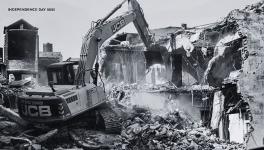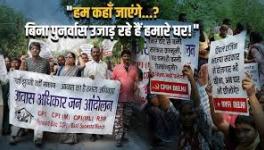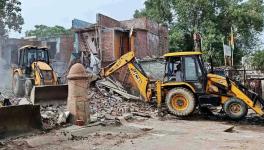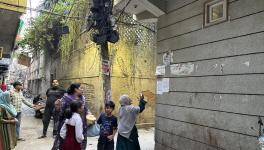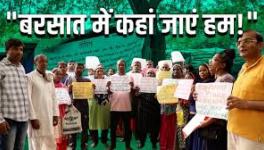Politics of Demolitions and Right to City
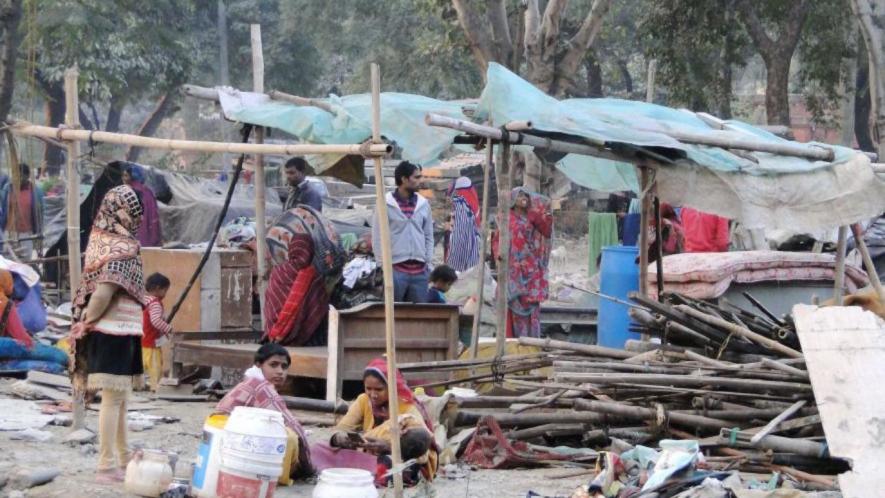
File Image
In recent months, bulldozers have become a common sight in India's urban landscape. They appear as agents of the neo-liberal project. At the behest of the neo-fascist dispensation, they are weapons of erasure, levelling homes, demolishing places of worship, and displacing communities that have long remained invisible to the dominant narrative of urban India. From Delhi's slum clusters to Gujarat's Jamnagar, from Uttar Pradesh's mohallas to the riverbanks of Assam, a new urban order is being enforced with impunity by the neo-fascist dispensation: an order where 'legality' is selectively invoked, where public interest is a mask, and where the working poor's very existence is criminalised.
The spectacle of demolition, often aired live on the ‘Godi Media’ outlets and circulated widely on social media, has emerged as a performative act of neo-fascist governance. It is also an ostensible show of strength that the dispensation craves, given its persistent pusillanimity with respect to the US government in the domain of international political economy. But beneath this manufactured spectacle lies a tyrannical political economy.
A History Written in Dust and Rubble
Demolitions of urban spaces of the working people are not a recent phenomenon. Their lineage can be traced back to colonial policies of slum 'clearance', where purportedly aesthetic and sanitary concerns were used to displace the urban working poor to further gentrification of these spaces. Post-Independence, the failure to provide adequate public housing led to the growth of informal settlements, which in turn became convenient targets for eviction and demolition whenever a mega-event, infrastructure project, or political shift demanded it.
The 1970s saw the emergence of a more systematic demolition regime, infamously during the Emergency, but also in subsequent years under the banners of beautification and flood control, as the neo-liberal project proliferated. The decisive break with dirigisme since 1991 injected new urgency into these efforts, as land became a greater medium for speculation whereby cities became sites for predatory accumulation, resulting in the undermining of social reproduction of ever more segments of the working people.
Read Also: Is the Right to Resettlement a Myth for Jhuggi Dwellers?
The urban working poor, many of them rural migrants of varying vintages, were more often than not pauperised by the twin processes of intensification of the destruction of petty production as well as rising rural land concentration. These twin processes disproportionately impinged adversely on the socially oppressed. They were now painted as encroachers, a legal category that stripped them of their rights in the city, aided by the silencing of their past history of contending with the aforementioned twin processes.
Demolitions and Communal-Political Nexus
What distinguishes the current wave of demolitions is not just their frequency or their brutality, but the communal architecture that underpins them. In state after state, such as Delhi, Gujarat, Uttar Pradesh, the Bharatiya Janata Party-led state governments have pursued demolition drives with unprecedented vigour, often targeting informal Muslim-majority localities or sites with cultural-religious significance.
The Jamnagar case in Gujarat is instructive. During a large-scale clearance operation, officials spotlighted the 'discovery' of a lavish, allegedly illegal dargah, accompanied by insinuations about its real use. The message was clear: the demolition was not simply about removing physical structures; it was about 'reclaiming' space from the other. By foregrounding one religious site, the state framed the entire operation as a necessary act of public order and legality (in the neo-fascist prism), thereby seeking to atomise the possibilities of resistance and solidarity. This resulted in the silencing of the displacement, dispossession, and loss of livelihood that followed.
This strategy is not new. It follows a well-worn path of using communal signifiers to try and manufacture consent for the primitive accumulation of capital. The working poor are not just being removed; they are being marked, stigmatised, and othered. Such neo-fascist narratives, amplified by the ‘Godi Media’ outlets and couched in neo-liberal legalese, seek to legitimise the tyrannical violence of demolition.
But the real motive for neo-fascist urbania is not merely the geographical othering of Muslims. It seeks to differentially undermine further the social reproduction process of all segments of the working people in order to drive the accumulation of capital that is now decisively defined by the nexus between international finance and labour arbitrage. In other words, diminishing returns tend to set in for schadenfreude deriving from the othering of Muslims, both within neo-fascist urbania and elsewhere.
Cities Without Citizens: Political Economy of Displacement
In this light, to see demolitions only as the physical act of removing settlements is to miss its deeper implications. It is a structural instrument that fuels inequality and heightens precarity in three interconnected ways.
1. Breaking the Informal Economy, Enriching the Digital Platforms
When slums are demolished, the informal economy embedded within them collapses. Affordable local services like carpentry, plumbing, tailoring, and domestic help become inaccessible to nearby residents (especially other segments of the working people). The families and communities of displaced workers, often forced to move to distant peripheries, cannot be socially reproduced at past wage rates. This results in their replacement by app-based service providers, aka gig workers. While these gig workers labour at wages that cannot ensure the social reproduction of their families and communities, the prices of these services often converge to steeper levels due to the profit margins involved. This transition benefits digital monopolies but undermines the social reproduction of most other segments of the working people.
2. Expanding the Precarity, Lowering Wages
Displaced segments of the working people, rendered homeless and jobless, are forced ever more securely into the lower depths of precarity. This depreciation of the worker depresses wages in the informal sector, creating a race to the bottom that hurts not just the displaced, but also the entirety of the urban working poor.
3. Gentrification and the Displacement Cascade
Post-demolition, the 'cleared' land, often located in central or semi-central zones, is ripe for redevelopment, i.e., becoming a link in the further accumulation of capital. Luxury apartments, gated enclaves, commercialised office spaces, and smart-city projects replace dense informal habitats. This process of gentrification pushes ever more intermediate segments of the working people, especially tenants unable to afford rising rents, further outward. Thus, displacement cascades across various segments of the working people. What emerges, if this proceeds without resistance, is a city increasingly segmented into gentrified enclaves on the one hand and differentially marginalised spaces on the other.
The Struggle for the Right to Stay
The tyrannical quest for neo-fascist urbania is confronting popular resistance. Across cities, the working people have organised against evictions, militantly protesting in the streets and petitioning courts, thereby demanding accountability towards their right to the city. Democratic movements have challenged procedural violations, lack of notice, absence of rehabilitation plans, selective targeting, etc., winning limited battles in the courts.
The struggle against neo-fascist urbania, building on the successes in litigation and localised resistance, needs to unravel its tyrannical political economy. What is also needed is the development of an alternative to neo-fascist urbania.
At the heart of this alternative must be in-situ rehabilitation, whereby the redevelopment of slum clusters occurs on the same site or within the same neighbourhood through public housing. This seeks to retain proximity to employment, schools, hospitals, and the broader community for the working people. It also prevents the creation of peripheral ghettos that exacerbate marginalisation. If led by public investment, such programmes can generate significant employment besides reclaiming housing as a right.
This in-situ rehabilitation process led by public financing, while it could partially draw on corporate social responsibility funds, must avoid piecemeal fund allocations that result in interminable lags between housing starts and completion. A progressive property tax system, linked to updated guideline property rates (that can therefore deal with property tax evasion), is imperative. As land values in gentrified areas rise, property taxes must rise progressively. This will not only generate tax revenue for public housing but also act as a counter to the intensified incorporation of land into the process of accumulation of capital centred around speculation.
Who Builds the City, and Who Gets to Stay?
Neo-fascist urbania seeks to drive the working people on a path leading to a gentrified city for capital and another differentiated space at the margins for the working people. The alternative to this path involves the crafting of an inclusive and plural counter to neo-fascist urbania that has the potential to reinvigorate the resistance to the neo-fascist dispensation as a whole.
Shirin Akhter is Associate Professor at Zakir Husain Delhi College, University of Delhi. C Saratchand is Professor, Department of Economics, Satyawati College, University of Delhi. The views are personal.
Get the latest reports & analysis with people's perspective on Protests, movements & deep analytical videos, discussions of the current affairs in your Telegram app. Subscribe to NewsClick's Telegram channel & get Real-Time updates on stories, as they get published on our website.









